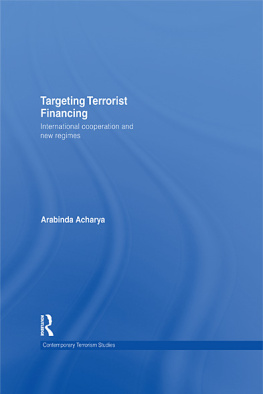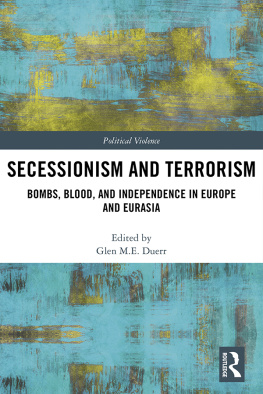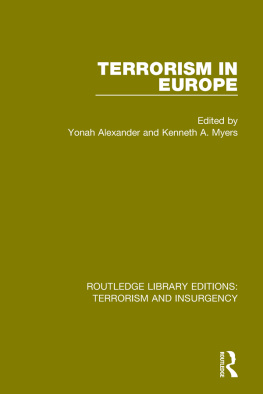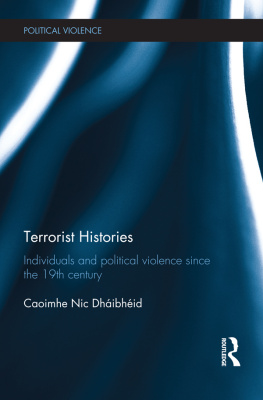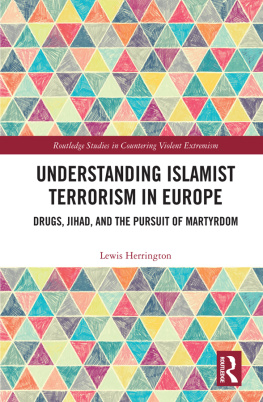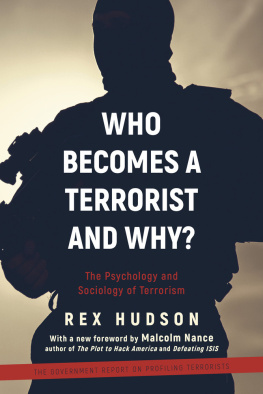Contents
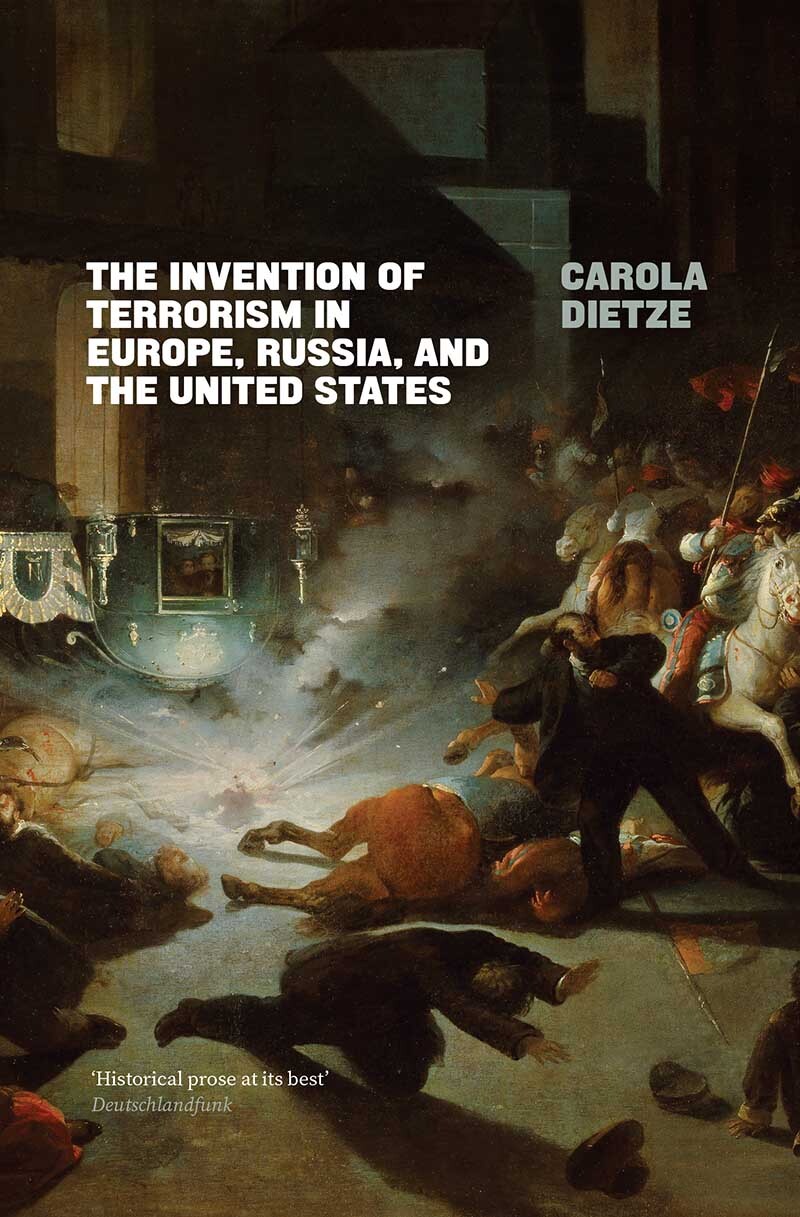
The Invention of Terrorism in Europe,
Russia and the United States
The Invention of Terrorism
in Europe, Russia and
the United States
Carola Dietze
Translated by David Antal, James Bell
and Zachary Murphy King

First published in English, revised and expanded from the German edition, by Verso 2021
Translation David Antal, James Bell and Zachary Murphy King 2021
Originally published as Die Erfindung des Terrorismus in Europa, Russland, und den USA 18581866 Hamburger Edition, 2016
This translation was supported by funds made available by the Cultural Foundations of Social Integration Centre of Excellence at the University of Konstanz, established in the framework of the German Federal and State Initiative for Excellence, and the Collaborative Research Centre / Transregio 138 Dynamics of Security. Types of Securitization from a Historical Perspective, funded by the DFG Deutsche Forschungsgemeinschaft / German Research Foundation.
All rights reserved
The moral rights of the author and translators have been asserted
1 3 5 7 9 10 8 6 4 2
Verso
UK: 6 Meard Street, London W1F 0EG
US: 20 Jay Street, Suite 1010, Brooklyn, NY 11201
versobooks.com
Verso is the imprint of New Left Books
ISBN-13: 978-1-78663-719-2
ISBN-13: 978-1-78663-720-8 (UK EBK)
ISBN-13: 978-1-78663-721-5 (US EBK)
British Library Cataloguing in Publication Data
A catalogue record for this book is available from the British Library
Library of Congress Cataloging-in-Publication Data
Library of Congress Control Number: 2020948730
Typeset in Minion Pro by Hewer Text UK Ltd, Edinburgh
Printed and bound by CPI Group (UK) Ltd, Croydon CR0 4YY
For Marc, Julia and Harriet
Contents
For one brief moment in history after 1989, it appeared as if terrorist violence would become a thing of the past in the established democracies of the West. As the Algerian War reminds us, terrorist tactics had been used frequently in the bloody wars of decolonization. When these wars ended in the 1960s, largely with the independence of the colonies, terrorism as a means of action to achieve political ends then moved directly to Europe, Japan and the United States. In Germany, the Red Army Faction (Rote-Armee-Fraktion, RAF) and the 2 June Movement (Bewegung 2. Juni) held the public increasingly in suspense starting in the second half of the 1970s. In France, the Action Directe were active; in Italy, the Brigate Rosse; in Japan, the Nihon Sekigun; and in the United States, the Weather Underground group. In addition, the ever-recurring use of terrorist attacks was evident in seemingly perpetual conflicts, such as between Israel and the Palestinians, and in the civil wars raging from Sri Lanka to South America. Moreover, even national governments occasionally resorted to terrorist tactics.
Yet the demise of the Soviet Union and the Warsaw Pact in 1991 appeared to seal the fate of terrorism at least in Germany and Europe. Societal models propagated by left-wing terrorist groups lost a good measure of their persuasive power with the collapse of real socialism. In view of this, the news in 1993 that Wolfgang Grams, a member of the RAFs third generation, had been killed in a shoot-out with special police forces at the train station of the town of Bad Kleinen seemed almost like a relic from the past. At the same time, the RAF announcement of its own dissolution in 1998 was thought by many to be the logical consequence of historical developments occurring worldwide, especially when groups that had fought primarily for ethnic-nationalist aims also began to lay down their arms. The Provisional Irish Republican Army (IRA) declared a ceasefire and its political organization, Sinn Fin, began negotiations that led in 1998 to the Good Friday Agreement. Likewise, the Euskadi Ta Askatasuna (ETA) entered talks that culminated in 2011 in the cessation of hostilities in Spain. Consequently, a prominent interpretation in the final years of the twentieth century was that terrorism had outlived its purpose as a means of political confrontation, at least in the Western democracies.
Careful observers at the time were already quite aware, however, that this impression was misleading. The very year in which Wolfgang Grams was shot in June, a bomb exploded in a transport van in February that had been left in the public parking garage under the World Trade Center in New York. The bomb tore a hole through the concrete seven storeys upward in the North Tower; six people died and over a thousand were wounded. The crime investigation revealed that this had been the work of Sunni extremists. In the same year that both the Good Friday Agreement was signed and the RAF in Germany announced its disbandment in April, bomb attacks were carried out against the US embassies
The attacks on the World Trade Center in New York and the Pentagon in Arlington, Virginia, on 11 September 2001 (9/11) put terrorism on the political agenda in bold letters worldwide. On the island of Bali, coordinated bombings of Paddys Bar and the Sari Club nightclubs, both popular particularly among tourists from Australia and Europe, killed over 200 people in October 2002. Another 200 were wounded, many seriously. The Islamist organization Jemaah Islamiyah claimed responsibility for the attacks, as did Osama bin Laden, who is thought to have aided the group in carrying them out. Since most of the victims were Australian nationals, the attack became known in the Pacific region as the Southeast Asian or Australian 9/11. That same month, Chechen separatists burst into the Dubrovka Theatre in Moscow during a performance of the musical Nord-Ost and took 900 hostages. When special security forces stormed the building a couple of days later, at least 130 people died many of them from inhaling an anaesthetic gas pumped into the building just prior to the raid. In September 2004, over a thousand hostages were taken in a school in Beslan, a town in the Republic of North OssetiaAlania, part of the These were followed by the bombings at the airport and a Metro station in Brussels in March 2016. In addition to these highly publicized attacks, many others could also be listed.
Today we experience a perpetual stream of images and news about attacks, hostage taking and kidnapping in China, Thailand, Bangladesh, India, Pakistan, Afghanistan, Iraq, Kuwait, Yemen, Israel, Lebanon, Egypt, Libya, Tunisia, Algeria, Morocco, Mali, Nigeria, Cameroon and Kenya. Since the militias serving the so-called ad-Dawlah-al-Islmiyah (Islamic State, IS or ISIS) launched their campaigns for territorial conquest, both Syria and Turkey have increasingly become the targets of terrorism. In addition, further terrorist acts have been carried out in the United States, Australia, Great Britain, France, Belgium, the Netherlands, Norway, Sweden, Denmark and Russia. Within only a few years, terrorist violence has become endemic, leaving only a dwindling number of regions in the world untouched.
other similar observations, historical images emerged that depicted the terroristic attacks since the turn of the millennium as, on the one hand, a new form of violence, and, on the other, a basically premodern, hence medieval, and religious (especially Islamist) one. Terrorism was being directed particularly against the secular, modern, highly industrialized societies and their institutions and representatives. These widely popular interpretations of history remained readily available not the least because their historical content was not seriously challenged.



